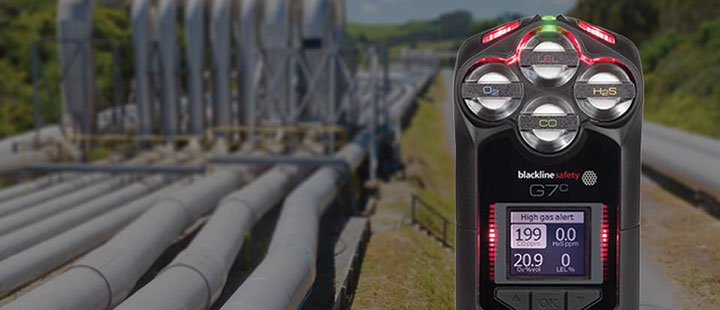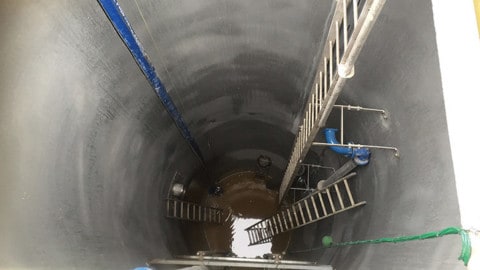The G7 is a safety solution that provides immediate notifications in the event a worker needs assistance. Revolutionising the global lone worker/gas detection industry, the G7 provides built-in 3G and satellite communication, a two-way speakerphone, live monitoring and modular gas detection.
 The G7 offers wireless connectivity, which increases situational awareness, accounting for everyone’s whereabouts – every safety incident and gas alert is communicated to live monitoring personnel in real time, empowering an active and optimised emergency response, making a huge difference for an employee who needs help.
The G7 offers wireless connectivity, which increases situational awareness, accounting for everyone’s whereabouts – every safety incident and gas alert is communicated to live monitoring personnel in real time, empowering an active and optimised emergency response, making a huge difference for an employee who needs help.
Taking protection to the next level
With two-way 3G or satellite connectivity and a built-in speakerphone, a live company self-monitored portal or live 24/7 monitoring, teams automatically connect with an employee and can manage a real-time emergency response when required – should they call for help using the SOS latch, a fall be detected, or a gas alert is triggered – delivering an optimised emergency response to their exact location.
Traditional personal gas detector programs have struggled to ensure ongoing compliance and to keep employees safe, but G7 sets the bar for the gas detection industry where businesses can see the compliance status of all equipment, in real time.
Every calibration, bump test and all equipment used is summarised in an intuitive, online dashboard and through weekly reporting.
Hazards posed by gases can be classified into three categories: toxic, asphyxiating and combustible.
Four gas monitors are typically configured with sensors to address each of these scenarios for a given worksite or scenario.
For example, in the energy industry, sour gas presents a significant risk of hydrogen sulphide (H2S) exposure to workers.
Many businesses supplement monitoring of H2S with combustible gases, oxygen and carbon monoxide. Combustible gas sensors are a smart addition to locations where natural gas is present with H2S, addressing the detection of a potentially explosive atmosphere.
Everyone requires oxygen, which can be displaced by other gases, causing a deficiency. Further, incomplete combustion can generate carbon monoxide, an asphyxiating gas.
Real-time emergency response management
Following an incident, every second counts. In life-threatening situations, how an emergency response is managed could mean the difference between an optimised rescue and a recovery.
When an alarm is triggered, for example a H2S detector reading, live monitoring personnel are prepared to take action.
- Within one second: G7 sends a high H2S alarm to the Blackline Live network Within two seconds: the live monitoring team receives the H2S detector reading and worker location
- Within 31 seconds: voice call is established with the worker
- Within 40 seconds: team member receives voice alert, mustering them to a safe area OR nearest responders are notified and directed to the worker’s location
With G7, rescues are optimised so more lives can be saved.
Lone worker safety
With G7, all incident and gas detection data is communicated in real time to the Blackline Safety Network for storage and reporting.
With G7 incident reporting, areas with persistent incidents or leaks can be identified so appropriate safety precautions can be taken.
A gas detector or personal safety monitor cannot warn of a threatening event if they are not properly used. G7 is an all-in-one solution, cutting down the number of devices a worker needs to carry with them, and constantly tracks usage for reporting.
Should an employee neglect to wear their device or use it appropriately, safety managers have the data to follow up with them accordingly.
This partner content is brought to you by Thermo Fisher Scientific Australia. For more information, visit www.thermofisher.com.au.
















